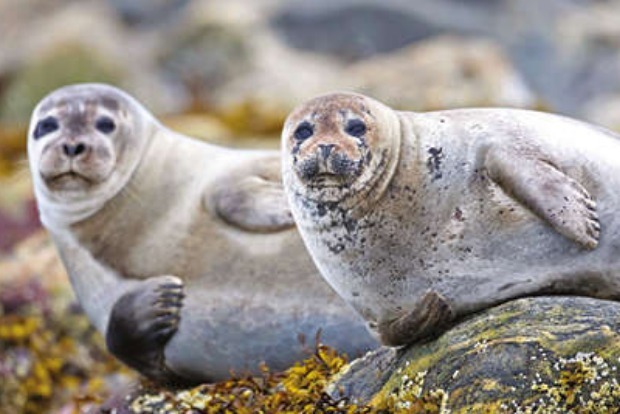One moonless night a little more than a decade ago, Marie Dacke and Eric Warrant, animal vision experts from Lund University in Sweden, made a surprise discovery in South Africa.
Washington: The researchers had been watching nocturnal dung beetles, miniature Sisyphuses of the savanna, as they tumbled giant balls of dung. The beetles seemed to be able to roll remarkably straight, even though they had no clear landmarks to reference.
“We thought maybe they were using our cameras, maybe someone had lit a fire somewhere,” Dr. Dacke said. “We were really confused.” Then they realised the beetles were guided by the 100,000 light-years-long streak of the Milky Way. We humans are famous for this sort of thing. The stars beckoned our species to cross seas and kindled the sciences that later let us putter up toward them in rockets. From culture to culture, the Milky Way served as backdrop and inspiration for stories about rivers, trees, gods, serpents and, of course, exploration. But we weren’t the only ones looking. Researchers like Dr. Dacke suspect that a wide swath of the animal world might sometimes navigate by starlight and might be lost as our city lights drown out ever more of it. Her team’s newest study found dung beetles became confused under light-swamped skies. The result adds to a small body of research, on what the night sky might mean to the other earthlings who can sense it. These experiments raise the questions: Can animals see the stars? Can animals use them? And what happens when they lose them?
In the 1780s, the astronomers William and Caroline Herschel scoured the skies for nebulae, finding some that resembled spiral seashells. In the 1920s, Edwin Hubble, at the helm of an enormous telescope, discovered that the Milky Way, Andromeda and Herschel spirals were galactic islands in a vast cosmic sea. And in the mid-2000s, Nick, a researcher of sorts in Cologne, Germany, swam to his own telescope and plopped into an underwater chair. Then he stuck his head in a tube and, if he saw a star, pressed a paddle. He was rewarded with fish. Nick, a harbour seal, entered the annals of astronomical history when Guido Dehnhardt, a marine biologist now at the University of Rostock, was studying how marine mammals orient themselves. If seals could discern stars, Dr. Dehnhardt and his colleague Björn Mauck hypothesised, that might help explain how the animals are able to complete long swims across otherwise featureless seas. To test a seal’s astronomical skills, Dr. Mauck devised what must be two of scientific history’s most wide-eyed, wonder-infused experiments. First the team constructed their seal-o-scope a tube with no lens, through which Nick was given a tour of the night sky. He pressed his paddle when bright points like Venus, Sirius and Polaris came into view; he could not see as many faint stars as humans can, the researchers determined, but plenty of possible celestial landmarks were still available to him.
Next, two seals were invited to participate, Nick and his even cleverer brother, Malte. When ushered back into the pool at a Cologne zoo, the seals entered a dome, its rim resting on a floating ring. The insides of this bespoke aqua-planetarium were lit up with 6,000 simulated stars. “They were immediately swimming across the planetarium and looking at stars like, ‘Oh, what’s that?’” No matter which way the star-projector was oriented, both seals could eventually swim in the direction of Sirius. That showed, the researchers argued in a 2008 paper, that seals traversing the open sea had the capacity to use lodestars to guide their travels.























